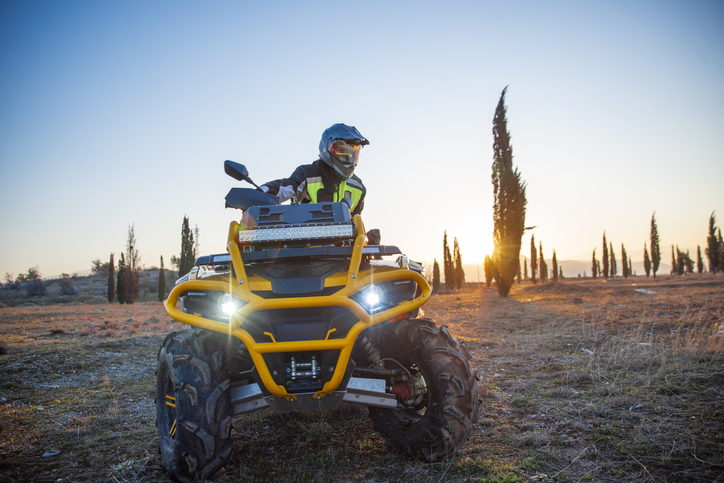One worker was seriously injured while driving an all-terrain vehicle (ATV) downhill in a vineyard.

gettyimages.ca/AdnanSeferovic
In 2020, a worker was seriously injured while operating an ATV at a vineyard. The worker was driving down an 11% slope when the ATV lurched ahead unexpectedly. The ATV and its driver fell down two steep slopes. They landed in vines supported by strung wire.
“Investigators believe the handbrake was applied — which engaged both the front and rear brakes — while the ATV was in 4×4 mode, causing the worker’s body to shift forward, his thumb to press the throttle lever, and the ATV to lurch forward with a large amount of acceleration,” reads this WorkSafeBC incident investigation report.
The report highlights a need for improved worker training. I spoke with Kyle Hart to find out more about worker training and other best safety practices for ATVs in agriculture. In his role as AgSafe Safety Consultant for the Central Okanagan, Kyle visits many different types of agriculture workplaces.
Steps required to improve safety
Kyle said that employers must first ensure a site risk assessment for operating ATVs on the property is conducted.
The next step is to have site specific operating procedures, such as a Safe Work Procedure, which includes operating on sloping grounds.
Employers must also assess the risk to operators. (See Assessing risks for more information.) This includes identifying – and eliminating, if possible – hazards such as icy conditions, excavations, trenches, or wires that might be present. It’s also important to monitor the site as conditions change and ensure workers are made aware of any new hazards.
Here are a few (of many more) safe use tips from Kyle, as well as the Canadian Centre for Occupational Health and Safety on using off-road vehicles:
- Inspect the vehicle before each use.
- Ensure workers are trained and can demonstrate competent safe operation of the ATV for the tasks they will be carrying out. Operators need to follow the manufacturer’s safety instructions and read the operator’s manual.
- Always wear a helmet, gloves, and eye protection.
- Drive at a speed that is safe for your ability, skill level, the current weather, and terrain you are travelling over.
- Ensure there are established emergency procedures.
- Don’t carry a passenger unless the vehicle is designed for it.
- Always look and plan ahead, and stay aware of your surroundings and where you are going.
Kyle also notes that it’s important to talk to your workers and encourage them to bring forward their safety concerns. Engaging workers goes a long way in improving the health and safety culture within a workplace.
Thanks to Kyle for speaking of safety with me!


